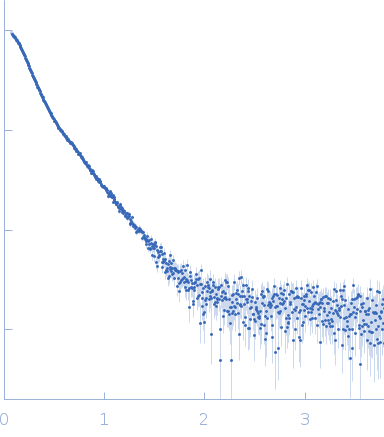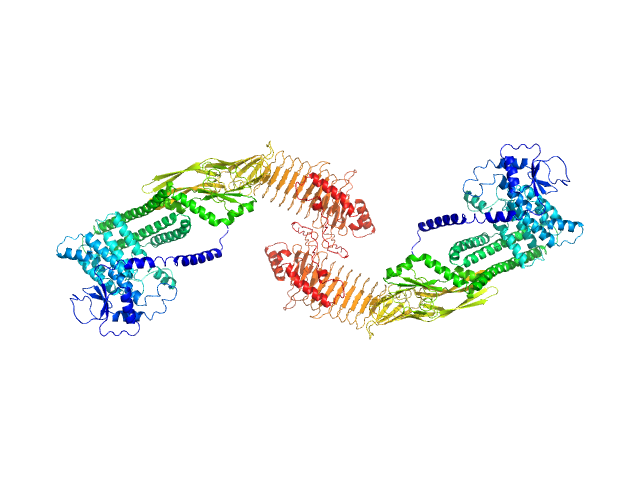| MWexperimental | 208 | kDa |
| MWexpected | 220 | kDa |
| VPorod | 346 | nm3 |
|
log I(s)
9.59×101
9.59×100
9.59×10-1
9.59×10-2
|
 s, nm-1
s, nm-1
|
|
|
|

|
|

|
|
Synchrotron SAXS data from solutions of Hemolysin A in 100 mM HEPES pH 8.0, 250 mM NaCl, 10 mM CaCl2 were collected on the BM29 beam line at the ESRF (Grenoble, France) using a Pilatus 1M detector at a sample-detector distance of 2.9 m and at a wavelength of λ = 0.099 nm (I(s) vs s, where s = 4πsinθ/λ, and 2θ is the scattering angle). In-line size-exclusion chromatography (SEC) SAS was employed. The SEC parameters were as follows: A 110.00 μl sample at 8 mg/ml was injected at a 0.50 ml/min flow rate onto a GE Superose 6 Increase 10/300 column at 10°C. 1500 successive 2 second frames were collected. The data were normalized to the intensity of the transmitted beam and radially averaged; the scattering of the solvent-blank was subtracted from those sample frames encompassing the SEC elution peak.
|
|
|||||||||||||||||||||||||||